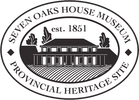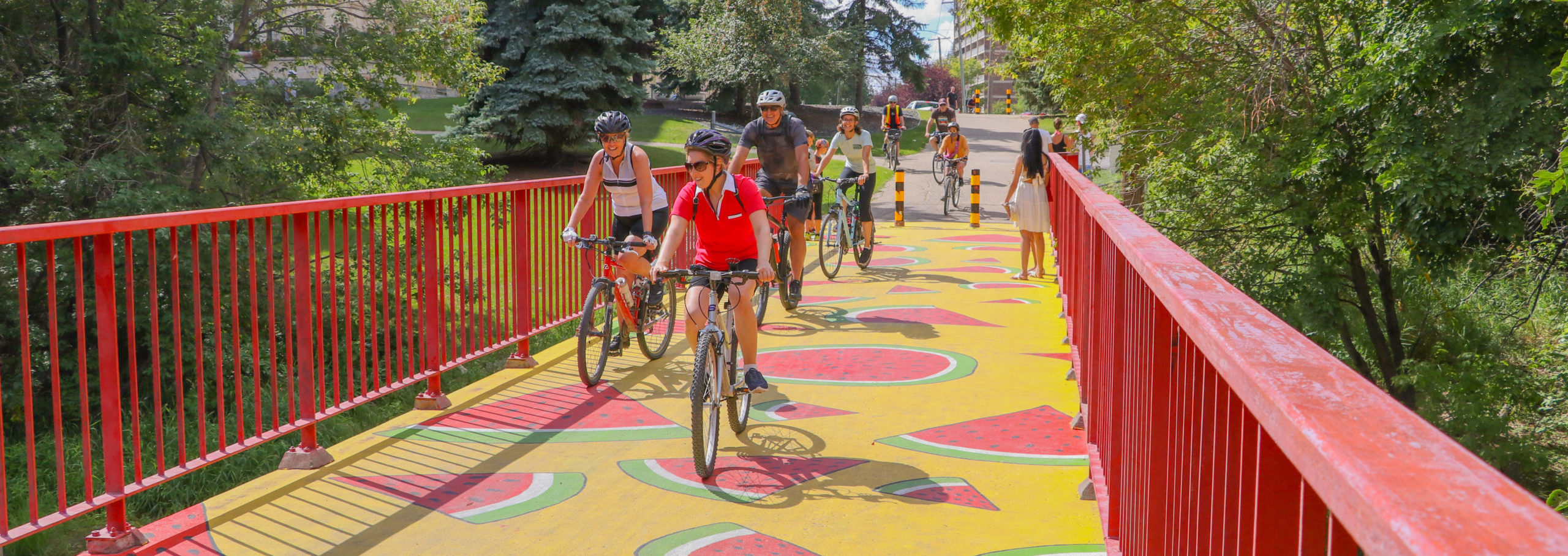
Explore the city by bike on your own schedule on a self guided bike tour!
Curator of Seven Oaks House Museum, Eric Napier Strong, has drawn deeply on his historical expertise to develop this series of rides exploring different areas of Manitoba’s early history.
Starts: The Forks – Oodena Circle
Tour Length: 5.5 km (7 km return)
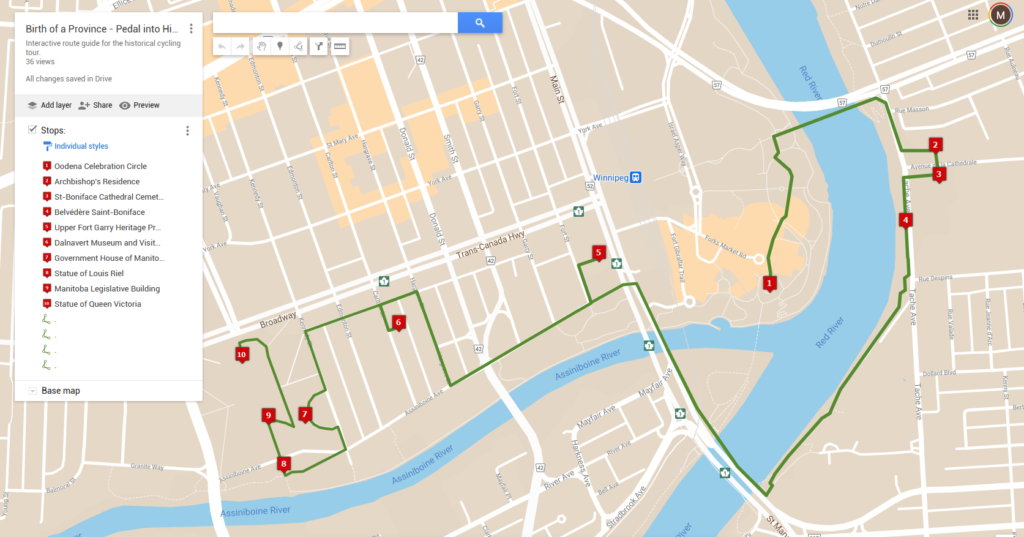
We all know that 2020 marked Manitoba’s 150th birthday, but how many of us really know the people and places that led to our province’s foundation?
This family-friendly ride along the scenic Red & Assiniboine Rivers will introduce you to the remarkable characters and exciting events that helped our home take shape.
The tour will help you better understand:
- Our local history before we became Manitoba
- The historical architecture of our downtown
- The differing cultures and perspectives of English and French Metis communities
- The impact of Canadian colonialism on local ways of life
Starts: Saint James Anglican Church
Tour Length: 10 km
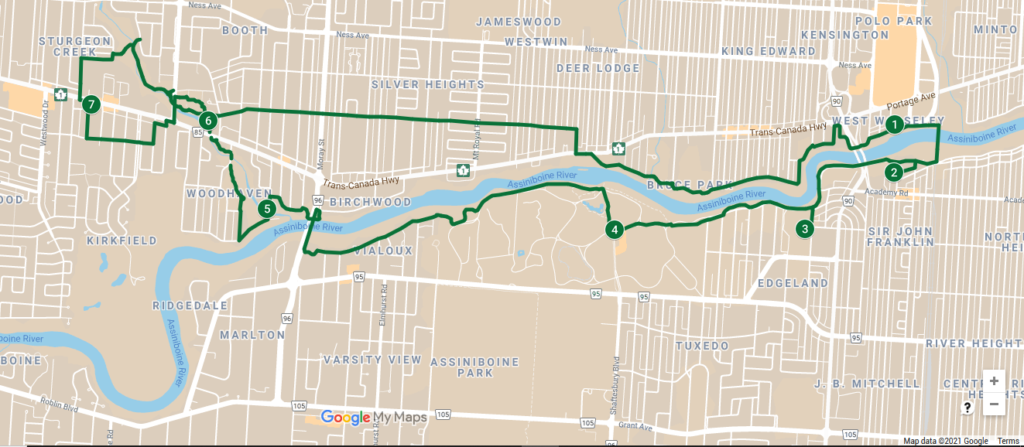
Winnipeg’s role as “Gateway to the West” made us more than just a metropolis: Our city became a model for Canada’s west-ward expansion, settlement, and colonization. What did that process really mean for the people of Manitoba, and what lessons can we learn from our rich architectural heritage?
This 10km tour will take you through the most historic neighbourhoods along the Assiniboine river. Along the way we’ll talk about the history of our city’s western expansion, and the impact colonization left on the prairies.
The tour will help you better understand:
- The development of West Winnipeg
- Evolving architectural styles from the 1850s to the 1930s
- Indigenous history along the Assiniboine River
- The role of city planning in colonization
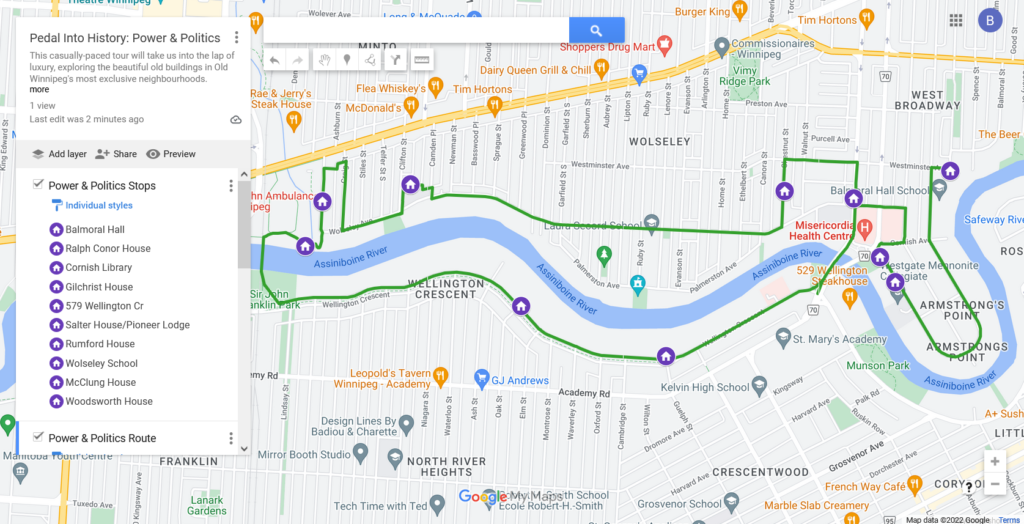
Starts: Balmoral High School (630 Westminster)
Tour Length: 8.75 km
This casually-paced tour will take us into the lap of luxury, exploring the beautiful old buildings in Old Winnipeg’s most exclusive neighbourhoods.
It’s no coincidence that many of Winnipeg’s most remarkable mansions are clustered along the Assiniboine River. From Armstrong’s Point to Wellington Crescent, we’ll be tracing the development of this area from backwoods bush to the seat of political and economic power.
We’ll be tracing the history of our city’s early elites: Visiting corrupt land barons, abusive mayors, and a wealthy Metis woman who taught racist writers what “respect” means on the prairies.
Starts: Le Musée de Saint-Boniface Museum
Tour Length: 10.75 km
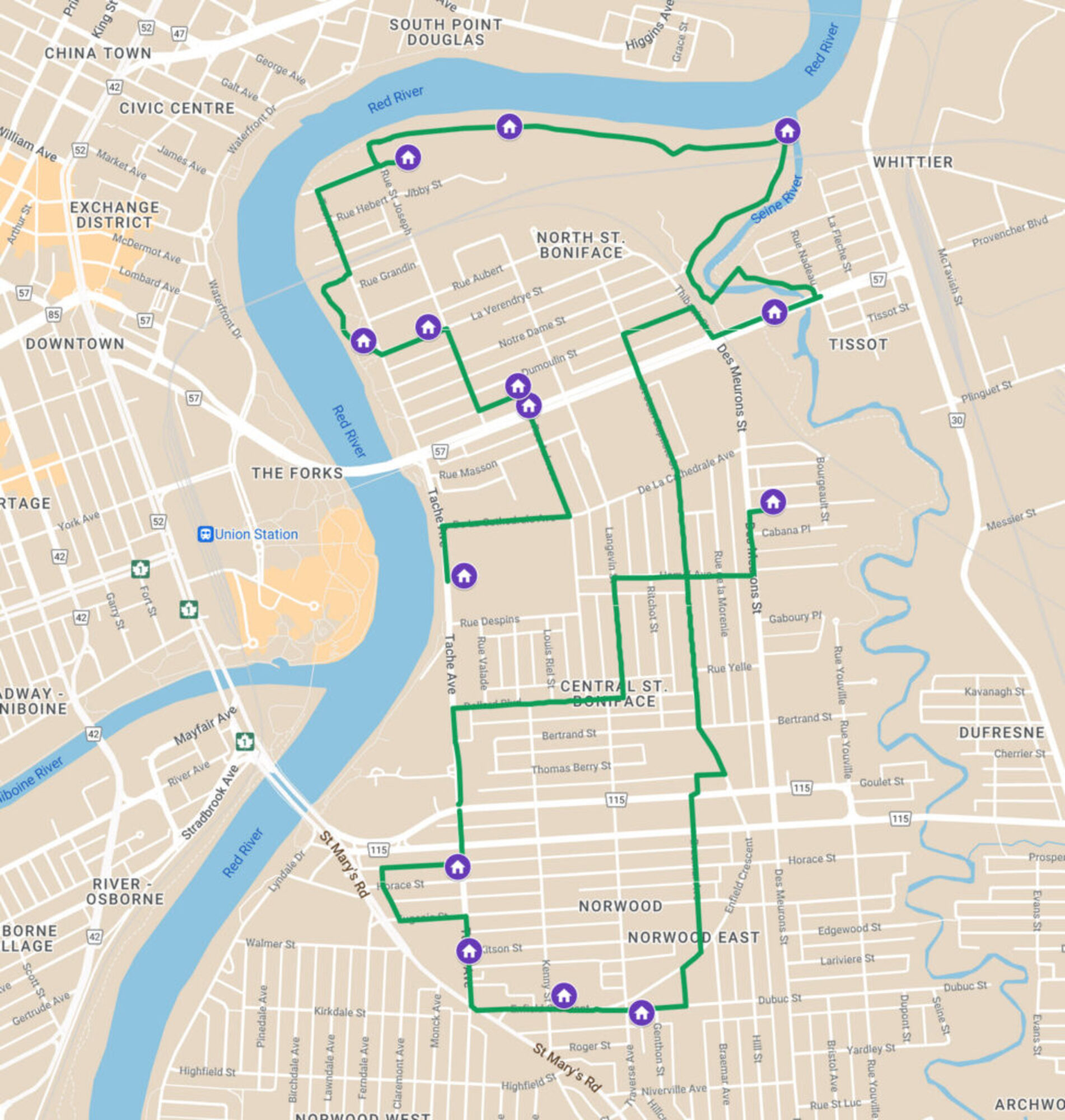
St. Boniface was one of the earliest parts of Winnipeg to be settled, after the Seven Oaks area.
It has always been our city’s French quarter and it has largely maintained its unique cultural character to the present day. Still, the neighbourhood has seen many changes and challenges related to its identity: Politics have led to clashes between English & French, Protestant & Catholic, Indigenous & settler communities.
The area is filled with rich architectural resources. Today we’ll be visiting buildings dating back as far as the 1850s and 1870s. We’ll see how diverse architectural styles evolved in response to different influences as the community grew. St. Boniface was also a center for trade, with its ideal location near The Forks and the Seine River. The first rail lines arrived in St, Boniface before Winnipeg, spurring heavy industrial growth in some areas. This unique geography and complicated industrial history means that today, St, Boniface offers incredible bike trails and park spaces along the rivers.
We’ll start in the heart of Franco-Manitoban culture: Old St Boniface, before stretching our legs for a ride south into the Anglo suburb of Norwood.
Starts: Le Musée de Saint-Boniface Museum
Tour Length: 15.75 km (19 km return)
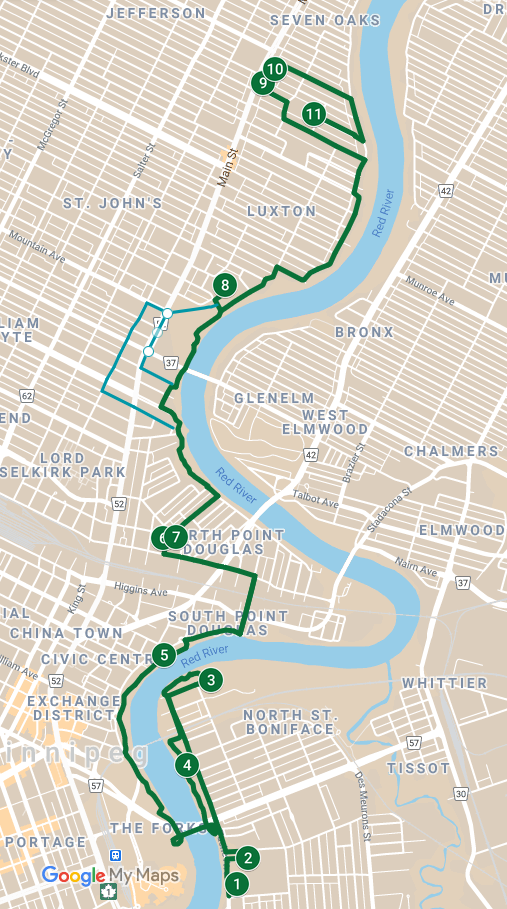
St. Boniface, Point Douglas, and (West) Kildonan were perhaps the three most important settlement areas during the early Red River Settlement period, and offer many of the remaining examples of historic locations and architecture from the time.
Although their histories are deeply intertwined, each area had its own ethnic, cultural and political dynamics, and the people of each shaped the development of early Winnipeg in distinct ways.
Starts: Riel House National Historic Site
Tour Length: 20-25 km
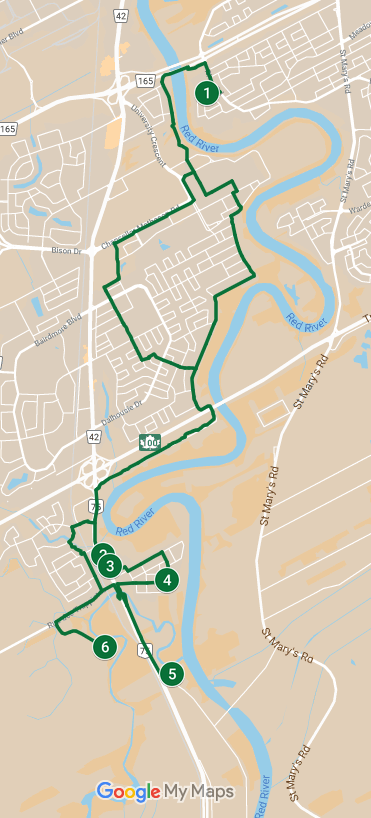
Winnipeg is made up of a diverse collection of communities, and their early histories often reflect very different cultural backgrounds. While the northern areas were largely settled by English and Scottish immigrants, the south end of our city’s roots are primarily Metis and French. As we travel south we’ll be following the Red and La Salle rivers, which both played a pivotal role in the development of our city.
St. Vital was first settled in an organized way in the mid 1820s. The first to settle here were Metis families who had previously lived south, near Pembina, North Dakota. Many of these people moved north following conflicts with the Sioux (Lakota) people, and the early success of the Red River Settlement.
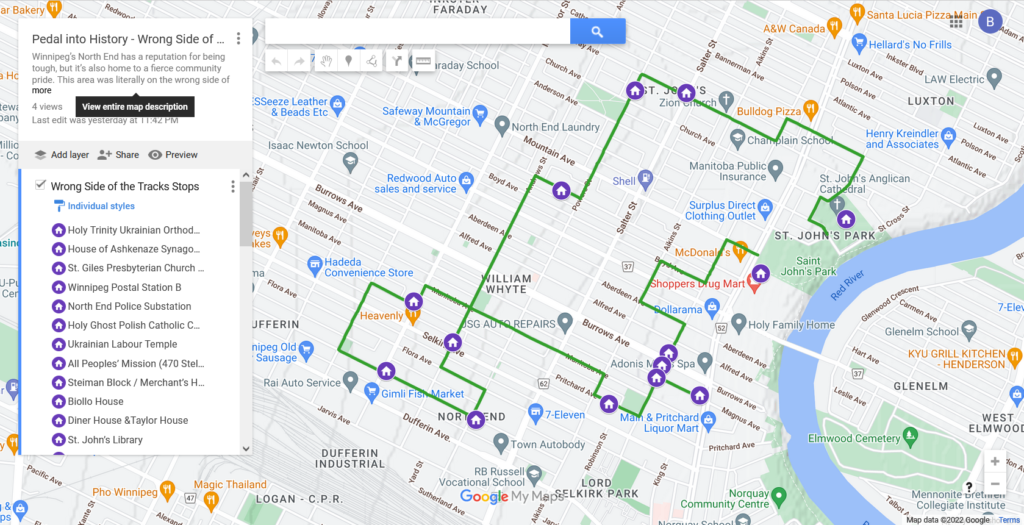
Starts: Holy Trinity Ukrainian Orthodox Cathedral (1175 Main Street)
Tour Length: 7.75 km
Winnipeg’s North End has a reputation for being tough, but it’s also home to a fierce community pride. This area was literally on the wrong side of the tracks from our urban core, and the symbolic barrier created major social divides that are still felt today.
The North End has also been a mosaic of cultural diversity from its earliest days. Out of the early foundations laid by Jewish, Polish, and Ukrainian immigrants, the community has developed a unique identity that has given birth to strong political and social movements. The area’s historic architecture will help us trace the evolution of this identity as the community changed and spread north into the affluent suburb of St. John’s.
Starts: Mennonite Brethren Collegiate Institute (175 Talbot Ave)
Tour Length: 9.50 km
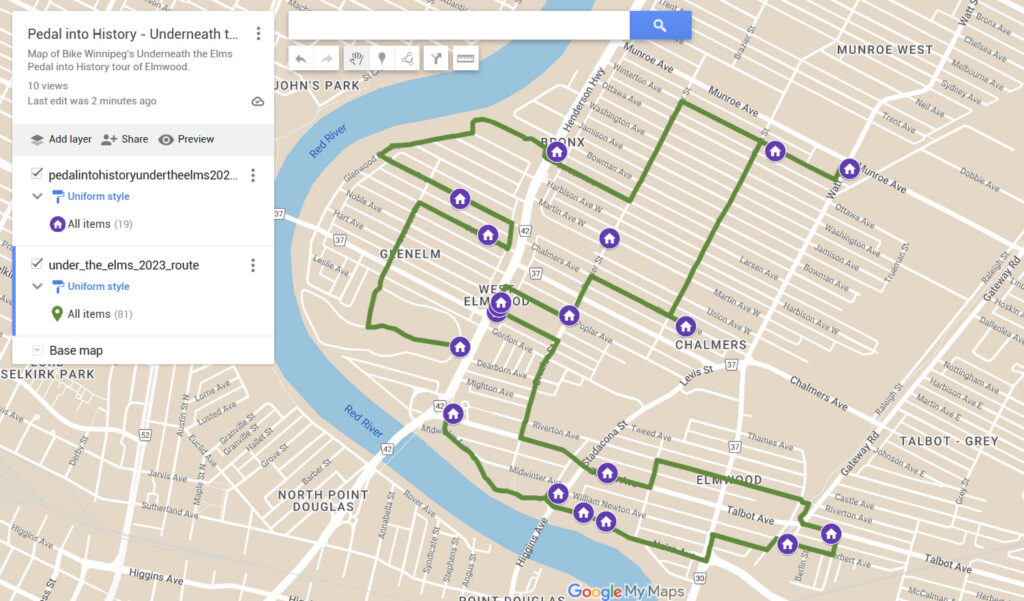
Few people realize that Elmwood started out as one of Winnipeg’s original suburbs. Not so long ago, developed areas of East Kildonan were open prairie. This ride will trace the evolution of this cozy neighbourhood from remote woodlots and farmland, to a bustling hub for industry and immigration. Rail lines and factories gave rise to their own style of distinctly-Canadian working-class architecture, standing in stark contrast with monumental churches.
As we tour the historic sites and architecture along the east bank of the mighty Red River, we’ll learn about the unique influences left on the area by its many immigrant communities from Central and Eastern Europe.
The Pedal into History project was supported by contributions from the Province of Manitoba through the Heritage Grants Program and the City of Winnipeg. We are grateful for their support.
If you can’t get out to one of our ArtRides with the Winnipeg Arts Council, check out the wonderful Winnipeg Public Art Works App that they have created for those seeking a self-guided tour. It’s full of great information on the public art works that enrich our city, including instructions on how to get to and from the various art works (with links Google Maps).
Route Videos
Board member and Bicycle Mayor Patty Wiens has created a playlist of route videos showing you how to navigate some of the more popular bike routes in the city.
Check then out here! https://www.pattybikes.com/youtube

